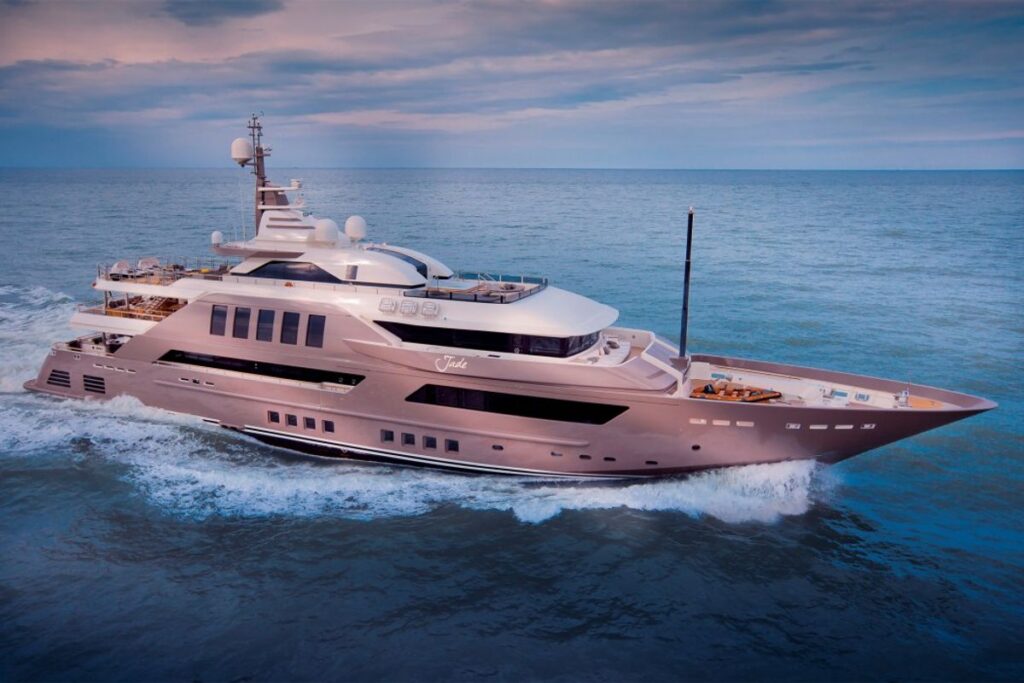In the fashion-forward world of eyewear, the trend of customization is not just about seeing better, it’s about looking your best with a personalized touch. ‘Unlock Your Style: The Rise of Eyewear Customization Tools’ delves into how the eyewear industry is embracing individuality through advanced technologies and bespoke options. From 3D-printed frames to precision-tuned lenses, this article explores the myriad of ways you can tailor your glasses to fit your unique vision and aesthetic preferences.
Key Takeaways
- Eyewear customization is transforming vision correction into a personalized fashion statement, offering tailored solutions for individual style and visual needs.
- Advancements in technology, such as 3D printing, are revolutionizing frame design, allowing for innovative, comfortable, and unique eyewear.
- Customization options extend beyond frames to precision-engineered lenses with features like blue light filtering and polarization for optimal vision and protection.
- The personalization phenomenon in eyewear not only enhances aesthetic appeal but also ensures a perfect fit, adapting to modern lifestyles and digital environments.
- The future of eyewear points towards customization as a standard, predicting a shift in the industry to prioritize personalized vision solutions and unique design.
The Personalization Phenomenon in Eyewear

Tailoring Vision: Beyond One-Size-Fits-All
The era of mass-produced eyewear that seldom meets the unique visual and stylistic needs of individuals is giving way to a new trend: customization. This shift allows for every aspect of eyewear to be personalized, from the fit and comfort to the aesthetic appeal, ensuring that your glasses are as unique as you are.
- Frame customization involves selecting the ideal size, shape, material, color, and pattern to complement facial features and reflect personal aesthetics.
- Precision-tuned lenses are crafted to provide optimal vision correction, tailored to your individual eyesight requirements.
- The process of ordering custom glasses includes professional examinations, consultations, precise manufacturing, and rigorous quality checks to ensure proper vision correction and fit.
Custom eyewear not only enhances vision and comfort but also serves as an extension of one’s personality, catering to various lifestyles, occasions, and budgets. With the rise of eyewear customization tools, finding the perfect pair that aligns with your style and vision needs has never been more accessible.
The Role of Technology in Custom Eyewear
The advent of technology has been a game-changer in the eyewear industry, ushering in an era of unprecedented customization. With the help of advanced software and manufacturing techniques, consumers can now design eyewear that is not only a fashion statement but also a perfect fit for their unique facial features and vision requirements.
- 3D Printing: Enables the creation of bespoke frames that conform to individual facial contours.
- Virtual Try-On: Uses augmented reality to allow customers to see how different frames look on their face before making a purchase.
- Precision Engineering: Ensures that the lenses and frames are crafted to exact specifications for optimal vision correction.
The synergy between technology and craftsmanship has opened up a multitude of possibilities, allowing for a level of personalization that was once the domain of only the most luxurious eyewear brands.
Custom manufacturing processes, such as those employed by companies like Tom Davies Bespoke Eyewear, exemplify the meticulous attention to detail that is now achievable. Customers can select from a variety of frame models, materials, and even add personalized touches like engraving their names. This level of customization not only enhances comfort but also ensures that the eyewear reflects the wearer’s personal style and functional needs.
Navigating the Sea of Customization Options
With the advent of advanced eyewear customization tools, consumers are now empowered to tailor every aspect of their glasses, from frames to lenses. Choosing the right combination of features can be as overwhelming as it is liberating. To simplify the process, consider the following points:
- Functionality: Assess the primary use of your eyewear—be it for reading, driving, or computer work—and prioritize features that enhance comfort and performance for these activities.
- Aesthetics: Reflect on your personal style and how you want to present yourself. Eyewear can be a statement piece, so select designs that resonate with your image.
- Fit: Ensure that the frames you select are the right size for your face and that the lenses are precisely cut to match.
When delving into the world of custom eyewear, it’s crucial to strike a balance between the vast array of options and your specific needs. The goal is to create a pair of glasses that not only corrects your vision but also fits seamlessly into your lifestyle and fashion sense.
Remember, the perfect pair of glasses is out there, but it requires a thoughtful approach to navigate the customization options effectively. By focusing on the essentials and understanding the impact of each choice, you can craft eyewear that is truly yours.
Bespoke Frames: Crafting Your Unique Look

3D Printing: Revolutionizing Frame Design
The advent of 3D printing technology has ushered in a new era for eyewear fashion, allowing for unprecedented levels of customization. This innovation enables individuals to design frames that are not only stylish but also perfectly contoured to their facial structure, providing both aesthetic appeal and comfort. The process of creating bespoke eyewear through 3D printing is transformative, offering a seamless blend of form and function.
The customization possibilities are endless, with 3D printing facilitating the creation of innovative designs and personalized touches that truly distinguish one’s style.
Here’s a glimpse into the advantages of 3D printed eyewear frames:
- Tailored fit to individual face shape
- Wide range of customizable design options
- Rapid prototyping for quick design iterations
- Use of durable and lightweight materials
As we explore the future of digital eyeglasses fitting and smart eyewear fashion, it’s clear that 3D printing stands at the forefront of this movement. Urban Optiks Optometry is among the pioneers, integrating AR and VR into the design process and utilizing eco-friendly materials to push the boundaries of sustainability in the optical industry.
The Art of Selecting the Perfect Frame
Selecting the perfect frame is a blend of art and science, where personal style meets precise measurements. The evolution of eyeglass technology is reshaping consumer preferences with innovative materials, smart eyewear integration, customization, and digital lifestyle impact. For those who prefer a mix of colors, options like rainbow or block color designs offer playful and expressive choices, while two-tone frames provide a stylish and contemporary look. It’s crucial to choose a color or pattern that not only appeals to your taste but also complements your skin tone, hair color, and eye color, significantly impacting your overall look and style expression.
Let’s explore how customization gives you control over each aspect of frame design to create glasses tailored for fit, comfort, and self-expression.
When it comes to size, selecting the right frame involves considering key measurements such as lens width, bridge width, temple length, and lens height—especially significant for bifocal or progressive lenses. A well-fitting frame should be slightly wider than the face, ensuring that the eyes are centered within the lenses. Custom eyewear takes personalization a step further by tailoring every frame aspect to the wearer’s facial measurements, providing an ideal fit and comfort.
Consultations with licensed opticians are invaluable for frame and lens selections. They recommend frames that complement an individual’s facial structure and personal style, and ensure that the chosen lenses are compatible with the selected frames. This is particularly important for high prescriptions where edge thickness might be a concern. The process of custom manufacturing and quality checks ensures that the final product meets the highest standards of fit and style.
Material Matters: Choosing the Right Components
When it comes to customizing prescription glasses, the choice of frame material is pivotal. Each material offers a unique blend of properties, advantages, and aesthetic appeal, influencing both the comfort and style of the eyewear. Selecting the right material is not just about looks; it’s about finding the perfect harmony between durability, weight, and comfort.
The eyewear industry has seen a resurgence of vintage styles, but with a twist. Modern technology allows these retro designs to be reimagined, offering fashion-forward consumers eyewear that is both personalized and innovative. This blend of old and new is shaping the future of eyewear, making the selection of materials more crucial than ever.
Here are some common materials used for customizable prescription glasses:
- Acetate: Known for its rich colors and versatility.
- Metal: Durable and often provides a sleek, minimalist look.
- Titanium: Lightweight and hypoallergenic, ideal for sensitive skin.
- Wood: Offers a unique, natural aesthetic that stands out.
The right choice in material can elevate the entire experience of wearing glasses, turning a simple accessory into a statement of personal style.
Precision-Tuned Lenses for Enhanced Vision

Advanced Lens Technologies
The eyewear industry embraces tailored solutions with cutting-edge advancements in lens technology. These innovations are not just about improving vision; they’re about enhancing the entire visual experience. Advanced algorithms and innovative materials are at the forefront, revolutionizing eyewear for both comfort and functionality.
Lens technologies have evolved to address a variety of vision correction needs, including:
- Nearsightedness
- Farsightedness
- Astigmatism
Each condition requires a unique approach to refraction and light bending, ensuring that light focuses precisely onto the retina for improved clarity.
The integration of 3D scanning and virtual try-on tools has made it possible for consumers to find the perfect lens fit before making a purchase. This personalized approach to vision correction is a testament to the industry’s commitment to providing custom solutions for every individual.
With the rise of e-commerce platforms like LensClass, customers can now enjoy a seamless shopping experience, complete with cross-selling features that suggest complementary products. This not only enhances the shopping experience but also educates consumers on maintaining optimal eye health.
Custom Coatings for Every Need
The realm of eyewear has seen a significant shift with the advent of custom coatings that cater to diverse needs, enhancing both the functionality and longevity of prescription lenses. Innovations in lens technology have improved visual clarity, comfort, and functionality in eyewear. Evolution of materials enhances durability and design diversity, reshaping consumer preferences and market trends.
Custom coatings are not just about aesthetics; they serve critical protective functions and can be tailored to individual lifestyles and vision requirements.
Some of the most prevalent coatings include:
- Anti-reflective (AR) coating, which reduces glare and reflections, aiding in visual clarity and minimizing eye strain.
- Scratch-resistant coatings that shield lenses from daily wear and tear.
- UV coatings that block harmful UV rays, safeguarding the eyes from potential damage.
Each coating addresses specific concerns and can be customized based on factors such as outdoor exposure and screen time, thereby adding multifunctional capabilities to one’s eyewear.
The Science of Perfect Fit: Lens Sizing and Shape
Achieving the perfect fit in eyewear is a meticulous process that hinges on precise measurements and a deep understanding of individual facial features. The result is a pair of glasses that not only corrects vision but also fits comfortably, enhancing the wearer’s overall experience.
When it comes to lens sizing and shape, several factors come into play:
- Lens width is crucial for ensuring that the eyes are centered within the frames, typically ranging from 40 to 60 mm.
- Bridge width affects how the glasses rest on the nose and spans from 14 to 24 mm.
- Temple length determines the fit around the ears, with a common range of 120 to 150 mm.
- For those requiring bifocal or progressive lenses, lens height is also a significant consideration.
Custom eyewear tailors every aspect of the frame, including the arms and nose bridge, to the wearer’s unique facial measurements, providing unparalleled fit and comfort.
Frame measurements are often indicated inside the temple of a pair of glasses, such as ’48-19-140′, which correspond to lens width, bridge width, and temple length, respectively. This information is vital for both opticians and individuals seeking to master online eyewear fitting with virtual try-ons and face shape analysis.
Integrating Function with Fashion

Balancing Aesthetics and Optical Performance
The intersection of aesthetics and optical performance marks a pivotal moment in eyewear evolution. Eyewear evolves from vision necessity to fashion-tech statement, with the industry witnessing a harmonious blend of style and functionality. This synergy is not just about looking good but also about ensuring that each pair of glasses meets the precise visual needs of the wearer. Customization plays a crucial role in achieving this balance, allowing individuals to express their personal style while catering to their unique vision requirements.
In the realm of custom eyewear, the choice of materials and design elements is paramount. For instance, opting for blue light-blocking glasses can significantly reduce digital eye strain, a common issue in our screen-centric world. Moreover, the integration of advanced lens technologies and coatings has made it possible to tailor glasses to various environments and lifestyles. > Personalization allows features such as blue light-blocking capabilities and polarization to seamlessly integrate, adapting your glasses to serve high-tech environments while enabling protection.
To illustrate the depth of customization available, consider the following aspects that can be tailored to individual preferences:
- Frame customization involves selecting the ideal size, shape, material, color, and pattern to complement facial features and reflect personal aesthetics.
- Lens customization includes choosing the right type of lens and coatings based on lifestyle needs, such as polarization for outdoor activities or anti-reflective coatings for night driving.
- Comfort is key, with adjustments available to ensure the glasses fit perfectly, providing long-term wearability without discomfort.
Ultimately, the goal is to create eyewear that not only corrects vision but also enhances the wearer’s lifestyle and image, making a clear statement about who they are and how they see the world.
Adapting Eyewear to Modern Lifestyles
In the fast-paced digital era, eyewear customization has become a crucial aspect of adapting to modern lifestyles. Custom prescription glasses not only provide improved vision and comfort but also allow individuals to express their unique style. With a wide selection of frames and lenses, they cater to various occasions and budgets, ensuring the perfect pair for every style and vision need.
Customizable prescription glasses have significantly advanced, integrating features such as blue light filtering and polarization to meet the diverse needs of modern users. These features are vital in the digital age, as they offer protection against the high energy blue light from screens, potentially preventing eye strain.
The table below outlines key features that can be customized to enhance both vision and lifestyle compatibility:
By considering factors such as frame shape, material, lens type, and coatings, eyewear can be tailored to align with individual needs and preferences. This level of personalization not only improves vision but also offers protection against digital screen harm and environmental factors, allowing for a truly adaptable vision solution.
The Impact of Customization on Eyewear Trends
The wave of customization in eyewear has not only transformed how consumers select and purchase their glasses but has also significantly influenced fashion trends within the industry. Custom eyewear has become a statement of individuality, with the ability to reflect one’s personality and style preferences through a myriad of options.
The rise of eyewear customization tools has empowered consumers to become designers of their own vision wear, leading to a more diverse and personalized range of products on the market.
Customization has also led to the emergence of niche markets and specialized brands that cater to specific aesthetic or functional needs. Here’s a glimpse into how customization is shaping eyewear trends:
- Personalization: Consumers can choose from an extensive array of colors, materials, and designs.
- Innovation: Brands are constantly developing new features and technologies to stay ahead.
- Sustainability: There’s a growing demand for eco-friendly materials and production processes.
- Inclusivity: Customization allows for designs that cater to a wider range of face shapes and sizes.
As customization becomes more prevalent, it is likely to continue driving the evolution of eyewear fashion, making personalized glasses not just a luxury, but a norm.
The Future of Eyewear: Customization as a Standard
The Shift Towards Personalized Vision Solutions
The eyewear industry is witnessing a paradigm shift as personalized vision solutions become the norm rather than the exception. Customization is no longer a luxury but a standard expectation among consumers seeking eyewear that caters to their unique visual needs and aesthetic preferences.
The integration of advanced technologies has made it possible for individuals to have eyewear that is not just a tool for vision correction but also an extension of their personal style.
Customizable options range from lens coatings and tints to frame materials and designs, each offering a distinct advantage and allowing for a truly individualized experience. Here’s a glimpse into the variety of choices available:
- Lens Coatings: Anti-reflective, UV protection, blue light filtering
- Lens Tints: Photochromic, polarized, gradient
- Frame Materials: Acetate, titanium, recycled materials
- Frame Styles: Classic, modern, vintage-inspired
This trend towards personalization is reshaping the eyewear market, as consumers are empowered to make choices that reflect their lifestyle, health needs, and fashion sense. The result is a product that is perfectly attuned to the wearer, providing enhanced comfort, functionality, and style.
Innovations Shaping the Eyewear Industry
The eyewear industry is undergoing a transformative phase with the advent of cutting-edge technologies and customization options. 3D printing is at the forefront, enabling the creation of frames that are not only unique in design but also tailored for an individual’s facial features and style preferences.
Innovations are not limited to frames alone; lens technologies have also seen significant advancements. Features such as blue light filtering, polarization, and a variety of coatings can now be integrated to cater to specific environmental conditions and digital eyestrain.
The synergy between technological innovation and customization is redefining what consumers expect from their eyewear, pushing the boundaries of both fashion and function.
The table below highlights key areas where customization is making an impact:
As these innovations continue to evolve, they pave the way for a future where eyewear is not just a necessity but an extension of personal identity and lifestyle.
Predicting the Next Wave of Eyewear Customization
As the eyewear industry integrates technology for health monitoring and customization, the future of eyewear customization is poised to transcend mere aesthetics. The integration of advanced capabilities such as glucose monitoring and stress detection is set to revolutionize the eyewear market, offering consumers not just vision correction but a comprehensive health management tool.
The next wave of customization will likely leverage the potential of 3D printing to offer even more personalized eyewear solutions. This technology enables the creation of frames that are not only unique in design but also provide a perfect fit for the wearer’s facial features. The possibilities for innovation in frame design and material use are virtually limitless, paving the way for eyewear that is as distinctive as the individual.
The convergence of customization and advanced health technology signifies a transformative period in the eyewear industry, where the focus shifts from standardized products to personalized vision and health solutions.
With the market for customizable prescription eyewear expanding significantly, it’s clear that consumers are increasingly seeking products that reflect their personal style and meet their individual needs. As customization becomes more prevalent, it will likely set a new standard in the industry, with personalized eyewear becoming the norm rather than the exception.
As we peer into the future of eyewear, the trend is crystal clear: customization is no longer a luxury—it’s a standard. At OPTIGRID, we’re at the forefront of this revolution, offering personalized eyewear solutions that cater to your unique style and vision needs. Don’t settle for off-the-shelf glasses. Embrace the future and create eyewear that’s as unique as you are. Visit our website to explore the possibilities and sign in to start your journey to perfect vision with a personal touch.
Embracing Individuality: The Future of Eyewear is Custom-Made
As we’ve explored in this article, the eyewear industry is undergoing a transformative shift towards customization, offering consumers the ability to tailor every aspect of their glasses to their unique needs and style. From the precision of 3D-printed frames to the personal touch in selecting lens types and coatings, customizable prescription glasses are not just a trend but a reflection of the growing demand for personalized products. These advancements not only enhance visual clarity and comfort but also allow individuals to express their personality through their eyewear choices. The rise of eyewear customization tools signifies a new era where the one-size-fits-all approach is replaced by a more inclusive, diverse, and user-centric model. As technology continues to evolve, we can expect even more innovative solutions that will further empower consumers to unlock their style and see the world through their own, perfectly crafted lens.
Frequently Asked Questions
How do customizable prescription glasses enhance personal style?
Customizable prescription glasses offer the opportunity to select from a range of lens types, frame shapes, colors, and sizes, allowing individuals to create eyewear that not only provides visual clarity but also matches their personal style and aesthetic preferences.
What role does 3D printing play in the customization of eyewear?
3D printing has revolutionized the customization of eyewear by enabling the creation of bespoke frames that are tailored to an individual’s facial features and style preferences. This technology allows for innovative designs and personalized touches that ensure comfort and fashion.
Can customizable glasses improve vision beyond standard prescriptions?
Yes, customizable glasses can improve vision beyond standard prescriptions by offering precision-tuned lenses that compensate for refractive errors like nearsightedness, farsightedness, and astigmatism, resulting in sharper vision tailored to individual needs.
What are the benefits of lens coatings in customizable prescription glasses?
Lens coatings in customizable prescription glasses can provide additional benefits such as blue light filtering to reduce digital eye strain, polarization for glare reduction, and protection against environmental factors, enhancing both vision and comfort.
How does customization impact the comfort and fit of prescription glasses?
Customization allows for precise measurements of frame size, lens width, bridge width, and temple length, ensuring that the glasses fit comfortably and are aligned properly with the wearer’s face. This personalized fit enhances long-term wearability and comfort.
What future innovations are expected in the field of eyewear customization?
Future innovations in eyewear customization may include even more advanced lens technologies, materials, and design options that further personalize vision correction and style. Additionally, we may see increased integration of digital tools to streamline the customization process.

I am a seasoned software engineer with over two decades of experience and a deep-rooted background in the optical industry, thanks to a family business. Driven by a passion for developing impactful software solutions, I pride myself on being a dedicated problem solver who strives to transform challenges into opportunities for innovation.
